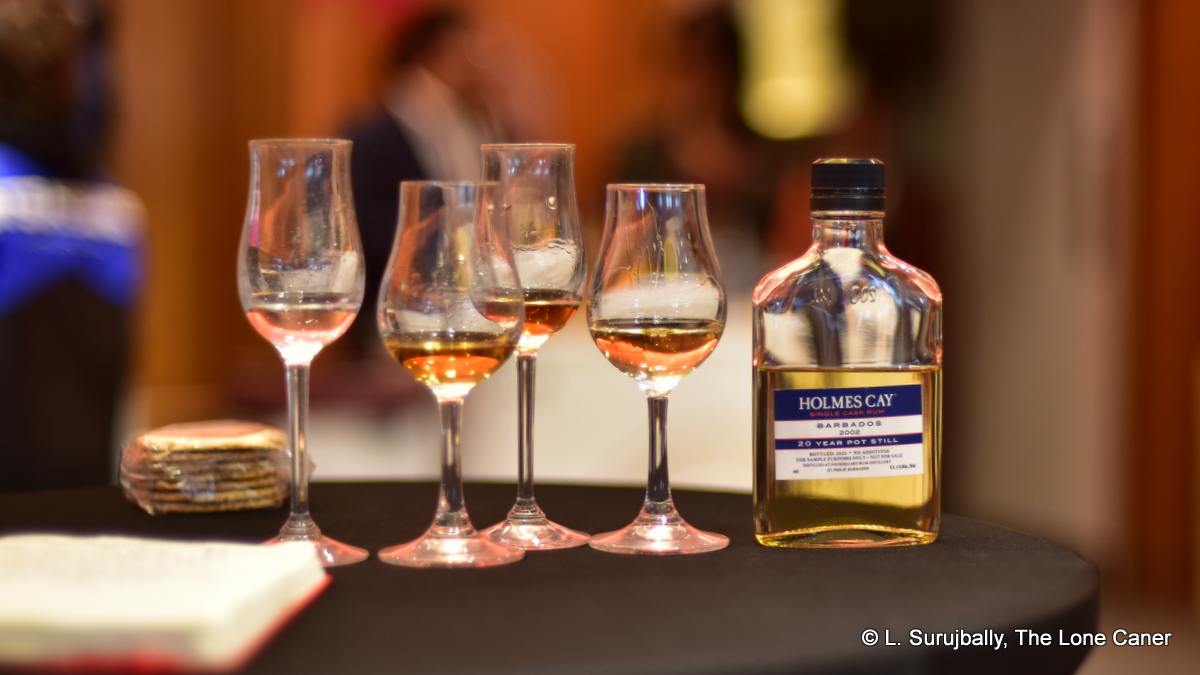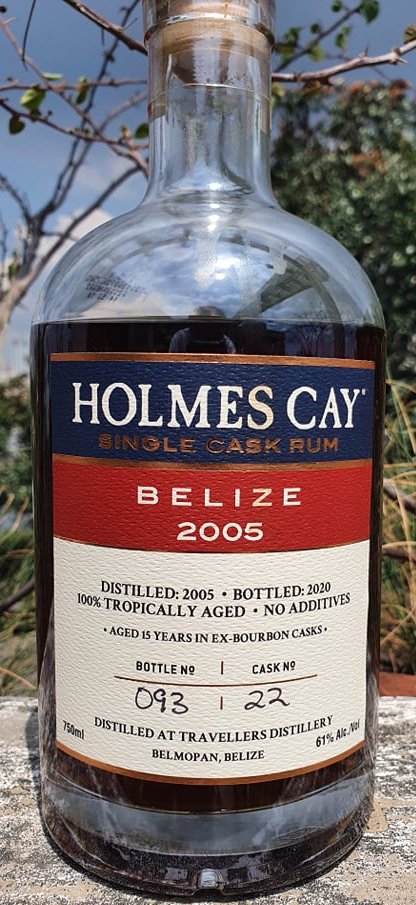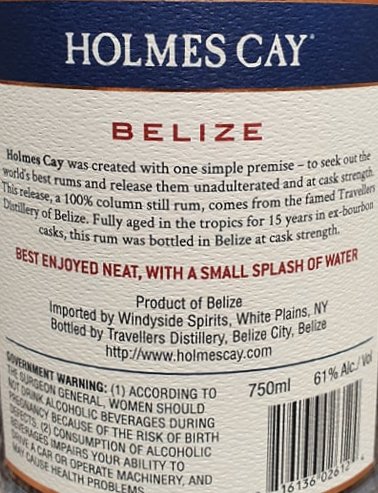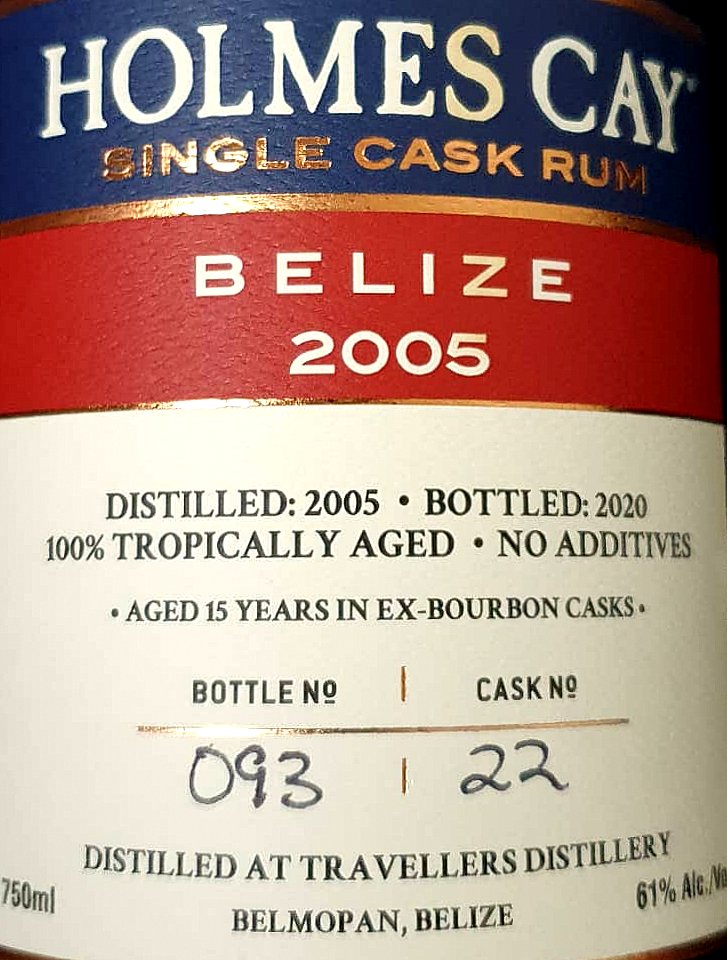To hear the social media commentary pouring out of the rumisphere last year, Eric Kaye pulled out some sort of magical rum rabbit from his jock and wowed the rum world with a magnificent one-of-a-kind, once-in-a-decade, 20-YO-rum from Foursquare. And not just any rum, but a pot still rum, which, as any fan or Foursquare junkie knows, is rare as hen’s teeth (the distillery is world famous for its pot-column blends, not single still distillates).
Holmes Cay is the brainchild and 2018 creation of the above-named Mr. Kaye (he was getting out of the music business at the time and looking around for other opportunities), and it’s at the forefront of a trend that hopefully gathers strength: indie bottling in the USA. Personally I’ve never understood why, given the higher startup and PP&E costs, American entrepreneurs go all out into launching distilleries, as opposed to taking advantage of more modest outlays to get an indie bottling operation off the ground. No sourcing materials, no experimentation, no technical expertise, just the selection of widely varying rums from around the world supplied by brokers who are happy to oblige and service a much less crowded market (although the insane permits, licences and bureaucracy remain the same).
Initially, to get things off the ground with a bang, Eric picked a couple of Foursquare barrels from 2005 (this was deliberate), and the speed at which they sold out in the US in 2019 assured him of the viability of the concept: he went all in, started sourcing more and began popping up on the festival circuit quite regularly to both learn and promote. By 2024 there were some 31 different bottlings in the portfolio, encompassing Mhoba in South Africa, Belize, Fiji, Guyana, Jamaica, Mauritius, Australia, Barbados, Trinidad and Reunion, and there’s no end in sight. Not to discount the sterling work Ed Hamilton did with his Hamilton rums from Guyana and Martinique and Jamaica that blaze the trail of indie imports to the US, it is no exaggeration to say Eric’s brand has probably allowed more Americans to buy a wider diversity of rums than just about anyone else around.
All of which led, if you want to mythologise it, to the sourcing of one of the twelve remaining barrels (out of an original twenty) of pot still distillate which Richard Seale sold to Main Rum back in 2002. Competition was fierce — everyone wanted a piece of something like this, no surprises there — and eventually, through threats, tears, bribes, blandishments and a lot of judicious begging (or so the storyteller in me likes to imagine), Eric managed to score one. He dressed it up nice as an exclusive edition, and released somewhat less than 200 bottles – it’s probably still possible to find one here or there, and can go for north of US$350 so it’s not for the light of purse.
Unsurprisingly, given the source distillery’s reputation, it was hailed as unique and all the usual encomiums followed in a rush from all the usual parties. But in truth it’s not the only rum of this provenance that appeared in the 2022-2023 release season – both Colours of Rum (out of Poland) and Royal Cane (a brand of Infinity Spirits from Amsterdam) also put out 20YO 2002 pot still rums from the distillery, albeit with somewhat less fanfare (and of course Habitation Velier did do a couple of its own pot still editions some years ago). But never mind: these days, when this 2002 4S vintage is mentioned, it’s Holmes Cay that gets the kudos and all the press.
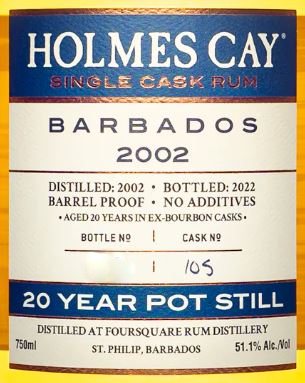 And perhaps they should. The damn thing is rare enough and, while it doesn’t really follow Velier’s path of fully tropical ageing — it was aged in Europe — twenty years is twenty years and the final result succeeds like nobody’s business, with 51.1% ABV helping it along to make its presence felt. Consider the way it opens: right from the beginning we are getting cedar shavings, fresh sawdust, that sense of sweet damp woody aromas. The fruits follow: citrus, prunes and apricots and other ripe stoned fruit. There’s a surfeit of kitchen spices lurking inside the bouquet: cinnamon, sandalwood, cardamom, turmeric, fenugreek, rosemary and all sorts of other savoury aromas that defy easy classification. Honestly, if I was asked…if you pressed me… I would have to say what it really reminded me of is an old spice soukh in Saudi or Dubai or Kuwait. It’s that good.
And perhaps they should. The damn thing is rare enough and, while it doesn’t really follow Velier’s path of fully tropical ageing — it was aged in Europe — twenty years is twenty years and the final result succeeds like nobody’s business, with 51.1% ABV helping it along to make its presence felt. Consider the way it opens: right from the beginning we are getting cedar shavings, fresh sawdust, that sense of sweet damp woody aromas. The fruits follow: citrus, prunes and apricots and other ripe stoned fruit. There’s a surfeit of kitchen spices lurking inside the bouquet: cinnamon, sandalwood, cardamom, turmeric, fenugreek, rosemary and all sorts of other savoury aromas that defy easy classification. Honestly, if I was asked…if you pressed me… I would have to say what it really reminded me of is an old spice soukh in Saudi or Dubai or Kuwait. It’s that good.
The way it tastes is no slouch either, and presents initially with a nice light series of floral notes. It’s a melange of fruits, leading with watermelon, papaya, then moving to strawberries and sweet Indian mangoes. Some smoky paprika and bell peppers freshly sliced. It has the warm taste of sweet pastries sprinkled with crystal sugar, cinnamon and bubble gum, and the entire time I’m sipping it I’m think appreciatively how well balanced the whole construct is, with no one flavour dominating. The finish closes up shop really well, with a soft swelling intensity — and all I can think as I taste this rum, savour the crisp tang of ripe fruits and spices, is that it’s nothing shy of spectacular.
When I taste rums, I see colours and memories alongside the aromas and tastes. My imagination goes all over the place, the more so with a good rum that shows us something different, something fascinating, something old done in a new way. Perhaps I would not be able to pick this out as a Barbados rum – let alone one from Foursquare – if I tried it blind. But it would stay in the mind, remain a mile marker in my appreciation of the brand, as it has ever since I first came across it. In a way I can’t quite explain, it reminds me of love and tenderness and desire, and a bright image of a soft kiss I want from the woman who inhabits my dreams. Any rum that can evoke such feelings is not merely spectacular, it may be nigh priceless. And while admittedly I’m a certifiable romantic and your own mileage will vary, that’s the way I feel about it and to some extent, why I rate it as I do.
(#1067)(91/100) ⭐⭐⭐⭐½
Other notes
- For a deeper dive into Holmes Cay and this release, check out Rum Revelations’ article, and their interview, as well as Rumcast’s two episodes, one on the founding of the brand here, and a follow up later (mostly about the Fiji release) here.
- Looking at various online reviews (and there aren’t a whole lot), I seem to be the one who likes this rum the most. Go figure.
